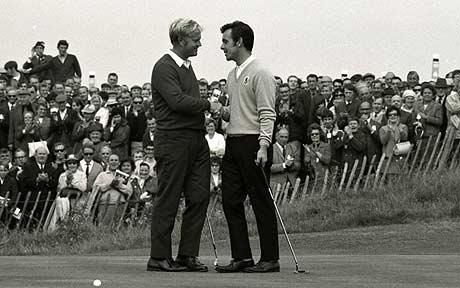by Neil Sagebiel
1969 was a big year in my life and the life of my family. Natives of Indiana, we moved from the Hoosier state to “The Golden State.”
California, here we come!
A cross-country move is a significant life event for anyone, and especially for a boy of 11. I said goodbye to my friends and traveled 2,000 miles to a strange new world in the back seat of our blue 1965 Plymouth Belvedere, my older brother alongside.
The changes were extreme: from the Ohio River Valley to the Mojave Desert, from a brick house with a walk-out basement to a one-level home made of stucco painted yellow, from neighborhood buddies to the new kid on the block who, I later found out, was supposed to get beat up not long after arriving in Palmdale. I somehow dodged that fight.
My few memories of the summer of ’69 are blurred. They include a trip to Disneyland in Anaheim. The third week of July also stands out. That was when Neil Armstrong became the first man to step onto the surface of the moon as part of the Apollo 11 mission. My family watched the historic moment in black and white on our Zenith television.
Armstrong famously said, “That’s one small step for [a] man, one giant leap for mankind.” The “a” wasn’t audible, but an audio analysis nearly four decades later confirmed that he did, in fact, say the “a.”
The astronaut with whom I shared a first name also was quoted as saying, “It’s good country for golf up here…you could drive a ball 2,000 feet.”
I don’t recall any of Armstrong’s words from that long-ago summer.
Golf?
That was a game my dad sometimes played on his day off. My sports were basketball and baseball.
But within two years of moving to California, I was playing golf with my dad and brother. And now, 45 years later, I’ve written a golf story that took place during the summer of ’69 and involved Hall of Fame players such as Jack Nicklaus, Tony Jacklin, Lee Trevino, Peter Alliss, Raymond Floyd, Neil Coles and Billy Casper.
That would have seemed far-fetched to the 11-year-old boy, but so did a moon walk until that other Neil visited the lunar surface on July 20, 1969.
Eight days before Armstrong walked on the moon, Tony Jacklin, a 25-year-old from the industrial town of Scunthorpe in northern England, became the first British golfer to win the British Open since Max Faulkner in 1951.
It changed his life and it changed golf, for Jacklin would go on to lead his British teammates that September against the mighty Americans in the 1969 Ryder Cup at Royal Birdale Golf Club in Southport, England.

Jack Nicklaus (left) shows his respect for Tony Jacklin during the Ryder Cup at Royal Birkdale in 1969. Image is in the public domain, via The Telegraph.
Great Britain had lost 14 of 17 Ryder Cups dating back to the official beginning in 1927 when English seeds tycoon Samuel Ryder donated the gold trophy. In September 1969, few people, British included, held out much hope for the 12 men playing for Great Britain, even though they were the home team playing a familiar style of golf on a seaside links course.
Just like America was first to the moon, it was also first in golf. In fact, at the time, the United States was seemingly first in everything.
This time, however, led by new Open champion Jacklin and fiery Captain Eric Brown, the British players didn’t bow to American supremacy. What followed, according to many who witnessed it, was the most controversial and compelling Ryder Cup ever played.
All tied up after three days and 31 matches, the 1969 Ryder Cup came down to the last two men in the last match putting out on the last green. The matter would be decided by Jacklin and Nicklaus. That’s when one of the most famous moments in golf occurred, a rare act of sportsmanship that sealed the first tie in the 42-year history of the Ryder Cup.
Great Britain rejoiced, for a draw was nearly as sweet as a victory. The United States was far from enthusiastic about the stunning outcome. Yet, in the ensuing years and decades, most all would agree the 1969 Ryder Cup had a perfect ending.
Eight players from those two 1969 teams went on to become Ryder Cup captains, including Jacklin (four times) and Nicklaus (twice).
The summer of ’69 that changed one boy’s life also forever changed the Ryder Cup.
The epic battle at Royal Birkdale breathed life into the matches during a period when they were struggling to survive. It also helped make the Ryder Cup what it is today–the biggest event in golf and a biennial sports event that attracts worldwide attention.
NEIL SAGEBIEL is the founder and editor of ARMCHAIR GOLF BLOG, one of the top golf blogs on the Internet. A former copywriter for a Seattle advertising agency and major newspaper, he is a freelance writer in Floyd, Virginia, where he lives with his wife and two daughters. His latest book is Draw in the Dunes
